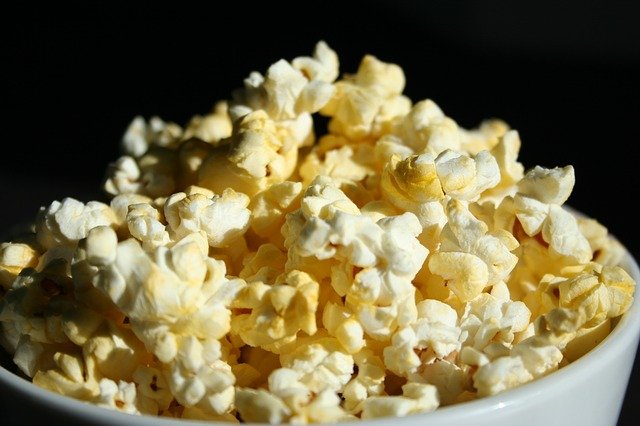The science of POPCORN :: Do you know how it pops?
In America, the holiday season is associated with all sorts of sweets – cookies, brownies, cupcakes, and more. But one salty, starchy snack is a consistent, if overlooked, member of this nosh pantheon: popcorn.
Indeed, popcorn is an American favorite. According to Popcorn.org, we consume about 13 billion quarts annually, or about 42 quarts a year for every single US resident. November and December represent some of the highest-volume months for popcorn sales.
But how do hard, dry grains explode into the crunchy munchie we love to chomp on?

As it turns out, the corn grain is chock-full of simple carbohydrates and a little bit of water. (For popping purposes, the ideal water content is about 13.5%.) As the hard corn is heated, the inner kernel turns into a hot, starchy soup. Because the kernel shell is strong, it refuses to burst even when the water inside reaches its normal boiling point (100°C). So the water simply keeps heating up until it is superheated.
Superheating occurs when a liquid is under pressure. The high pressure raises the liquid’s boiling point, so it remains a liquid even when it should convert to gas. (This is how pressure cookers work.) Inside the hot corn kernel, the pressure rises with the temperature, heating the interior water as high as 180°C – nearly twice the boiling point of water.
Eventually the pressure gets so high that the shell can’t hold. A crack opens, causing a few things happen very quickly. Some water contained in the shell rushes out of the kernel, shooting the kernel into the air. The shell continues to rupture, which releases the rest of the water. Because the pressure nosedives when the kernel falls apart, that super heated water instantly turns to gas. It escapes violently, spreading and hardening the leftover starches on its way out. Add a little salt and oil and you’ve got a very tasty snack on your hands!
Check out this super slow-mo video to see a visual of the previous paragraph – note all the STEEM being released from the exploding kernel!
One last tidbit: where does the popping sound come from? It’s not, as you might guess, the bursting of the kernel. It’s actually caused by the nearly instantaneous conversion of water into vapor which produces a pressure wave similar to how lightning creates thunder. Typically, the pop comes about 100 milliseconds after the kernel breaks!
Image credit: Shelburn at Pixabay.
Upvote and follow if you enjoyed, I love writing about science and will be doing a lot of it here!
Thanks for the information i really enjoyed knowing the fact....
I love popcorn
Glad you found it interesting, I sure did!
Damn! even in the science tag i found something that will make me more fat in next 2 min! :) great post!
Hahah thank you! Popcorn is actually very nutritious -- it's a whole grain, full of fiber and even some protein. Unfortunately all the stuff we like to add it it (oil, butter, salt, caramel, etc) is what really gets you :)
Are you serious? I have alot of things to learn. I have to start know what I eat and what they are made of. I eat popcorn thrice in a week. Now I know where my cheeks come from.
Glad you found it useful. Follow here for more interesting science info!
The video is great, it made me really happy since I LOVE POPCORN!
I love popcorn, before I read this post I kinda took popcorn for granted, but there's a lot of science behind.
Me after knowing that popcorn is nutritious:

I agree, it's way more interesting than I first thought!
@warrensz
great job! in the world of crypto everyone sees their coins "as ready to pop"... and it fuels them with energy!